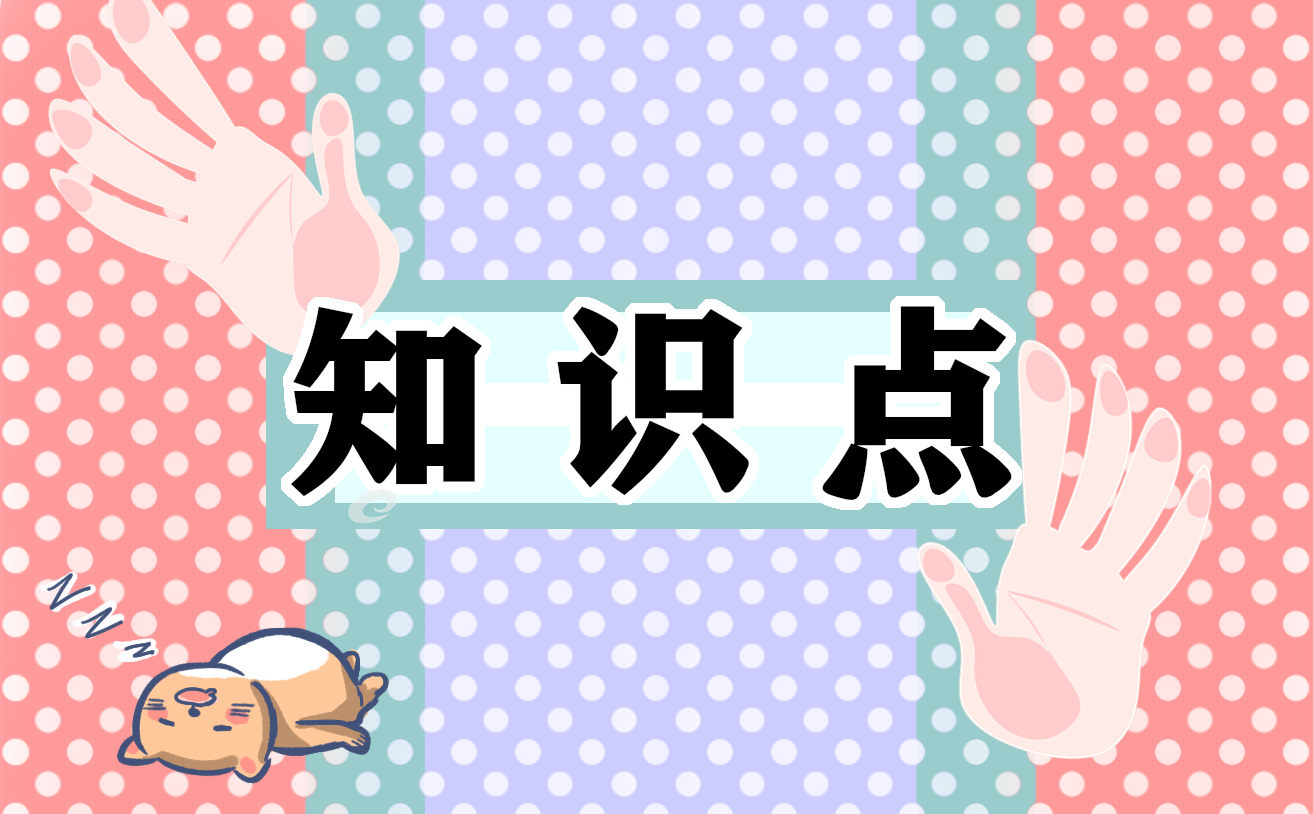要想学好初中英语一定要对背诵单词,多朗读课文,多练习写作等等,一起来看看有哪些知识点和学习方法吧,下面小编为大家带来八年级英语上册知识点概况总结,希望对您有帮助,欢迎参考阅读!

八年级英语上册知识点
第一单元:Friends
【重点短语】
1 something to drink 一些喝的东西
2 have some more food 再吃点儿食物
3 one of my best friends 我最好的朋友之一
4 be willing to share things with her friends 愿意和她的朋友分享东西
5 help me with my homework 帮助我做家庭作业
6 give her seat on the bus to someone in need 在公共汽车上把她的座位让给有需要的人
7 grow up 长大,成长
8 make sb. look smart 是某人看上去聪明
9 have a good sense of humour 有很强的幽默感
10 tell funny jokes 讲有趣的笑话
11 walk past our desks 经过我们的课桌
12 knock…onto… 把……撞到……上
13 say a bad word about sb. 讲某人的坏话
14 keep a secret 保守秘密
15 travel around the world 环游世界
16 both my neighbour and my best friend
17 feel bored or unhappy 感到无聊或不快乐
【重点句型】
1 There’s nothing in the fridge. 冰箱里没有东西
2 He tells funny jokes and always makes me laugh. 他讲滑稽的笑话而且总是使我大笑。
3 When he walks past our desks, he often knocks our books and pens onto the floor.
当他经过我们的课桌时,常把我们的书和钢笔撞到地上。
4 When something worries me, I can always go to her. 当某事使我担心时,我总是去找她。
5 I can tell her anything because she can keep a secret. 我能告诉她任何事情,意为她能保守秘密。
6 My book is more interesting than his. 我的书比他的有趣。
7 I would like to be a social worker when I grow up. 当我长大的时候,我想成为一名社会工作者。
8 She always has a smile on her face and looks happy. 她脸上总是带有微笑而且看上午很高兴。
【重点语法】
形容词比较级和最高级规则变化:
① 多数单音节形容词 = 词尾加 er 或 est
long tall clean
长的 高的 干净的
longer taller cleaner
较长的 较高的 较干净的
longest tallest cleanest
最长的 最高的 最干净的
② 以e结尾的单音节形容词-------- 词尾加 r 或 st
large late nice
大的 晚的 好的
larger later nicer
较大的 较晚的 较好的
largest latest nicest
最大的 最晚的 最好的
③ 以重读闭音节结尾,且结尾只有一个辅音字母的形容词-------双写这个辅音字母,再加er 或 est
big hot thin
大的 热的 瘦的
bigger hotter thinner
较大的 较热的 较瘦的
biggest hottest thinnest
最大的 最热的 最瘦的
④ 以“辅音字母 + y”结尾的形容词---------- 变y为i,再加er或 est
easy busy angry
容易的 繁忙的 生气的
easier busier angrier
较容易的 较忙的 较生气的
easiest busiest angriest
最容易的 最忙的 最生气的
⑤ 两个或两个以上音节的形容词-------- more/most + 形容词原级
beautiful important
美丽的 重要的
more beautiful more important
较美的 较重要的
most beautiful most important
最美的 最重要的
不规则变化:good/well---better---best, bad/badly---worse---worst,
many/much---more---most, little---less---least,
far---farther/further---farthest/futhest
形容词原级,比较级和最高的用法:
1 当两者进行比较时,通常用形容词的比较级形式,其后用than引出比较的对象。形容词比较级前常用much,a lot,even等修饰。‘比较级+and+比较级’表示‘越来越……’; ‘the+比较级,the+比较级’表示‘越……,越……’。
2 当三者或三者以上的人或事物进行比较,表示‘最’的意思时,用形容词最高级形式,且最高级前面必须要有定冠词the,在使用形容词最高级时,后面通常接‘of.../in…’,表示比较的范围。当比较的范围与主语是同一类人或物,或属于同一概念是,要用介词of引导的短语;当比较的范围与主语不是同一类人或物,强调在某一范围或场所内进行比较时,要用介词in引导的短语。